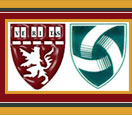John Hartwig, Ph.D.
Selected Papers
This group of papers was selected to highlight work defining: new insights into the formation of platelets by megakaryocytes and their release into blood; our novel approach to understand the removal of platelets from the circulation; and last, my detailed studies into the platelet shape change reaction driven by actin.
Hartwig JH, Shevlin P. The architecture of actin filaments and the ultrastructural location of actin-binding protein in the periphery of lung macrophages. J. Cell Biol. 1986; 103:1007-1020. 
This paper marks the application of high-resolution immunoelectron microscopy by us to understand cell movement. It set the stage for our furture work on platelets below.
Gorlin JB, Yamin R, Egan S, Stewart S, Stossel TP, Kwiatkowski DJ, Hartwig JH. Human endothelial actin-binding protein (ABP-280, filamin): a molecular leaf spring. J. Cell Biol. 1990;111:1089-1105. 
Defining the structure of human filaminA (ABP-280) was a monumental task in 1990. At the time this was the largest protein sequenced. This protein accounts for 3% of the total protein of a blood platelet and links the von Willebrand factor receptor to the platelet actin cytoskeleton. This linkage aligns this receptor on the resting platelet surface and is the major cytoskeleton-plasma membrane linkage in the platelet as explored in the following paper.
Hartwig JH, DeSisto M. The cytoskeleton of the resting human blood platelet: structure of the membrane skeleton and its attachment to actin filaments. J. Cell Biol. 1991;112:407-425. 
Hartwig JH. Mechanisms of actin rearrangements mediating platelet activation. J. Cell Biol. 1992;118:1421-1442. 
The combination of these two papers defines the work of my laboratory. Insight gathered includes defining the linkages of the actin cytoskeleton to the plasma membrane. It remains the definitive work on the structure of the resting and active platelet cytoskeleton. The location of barbed end nucleation sites that are exposed/formed during platelet activation through the thrombin receptor is detailed.
Winokur R, Hartwig JH. Mechanism of shape change in chilled human platelets. Blood. 1995;85:1796-1804. 
This work, while only published in blood, sets the stage for publication #10 below. It was a critical diversion into understanding the effect of cooling on platelets. It shows that platelets change shape when cooled because actin assembly is induced.
Hartwig JH, Bokoch GM, Carpenter CL, Janmey PA, Taylor LA, Toker A, Stossel TP. Thrombin receptor ligation and activated Rac uncap actin filament barbed ends through phosphoinositide synthesis in permeabilized human platelets. Cell. 1995;82:643-653. 
This paper demonstrates the utility of studying signal transduction to actin in permeabilized platelets. It defined a pathway running from the PAR-1 receptor to the small GTPase rac to PIP 5-kinase to form PI4,5P2 that is required for the formation of barbed end nucleation sites in activated platelets.
Barkalow K, Witke W, Kwiatkowski D, Hartwig J. Coordinated regulation of platelet actin filament barbed ends by gelsolin and capping protein. J. Cell Biol. 1996;134:389-399. 
The first definitive cataloging of the interaction of barbed end capping proteins with actin as the actin cytoskeleton is remodeled following receptor ligation.
Italiano Jr JE, Lecine P, Shivdasani RA, Hartwig JH. Blood platelets are assembled principally at the ends of proplatelet processes produced by differentiated megakaryocytes. J. Cell Biol. 199;147:1299-1312. 
Having spent 10 years studying the structure of the platelets, it was a true revelation to dissect how platelets are produced by megakaryocytes. This paper changed the dogma on platelet production demonstrating that platelets do not form in the body of megakaryocytes but instead assemble at the ends of long proplatelet processes. It described an actin driven mechanism used by megakaryocytes to bifurcate the shafts of proplatelet and thereby amplify the number of platelet production sites.
McGrath JL, Osborn EA, Tardy YS, Dewey Jr CF, Hartwig JH. Regulation of the actin cycle in vivo by actin filament severing. Proc. Natl. Acad. Sci, USA. 2000;97:6532-6537. 
This paper marks the first use of actin-binding protein deficient cells to study the dynamics of actin turnover and demarcates the requirement for gelsolin-mediated filament severing for the normal actin filament turnover reaction.
Hoffmeister, KM, Felbinger, TW, Falet, H, Denis, CV, Bergmeier, W, Mayadas, TN, von Andrian, UH, Wagner, DD, Stossel, TP, and JH Hartwig. The clearance mechanism of chilled blood platelets. 2003; Cell: 112:1-20. 
This paper, and the most resent Science followup, demonstrate the power of defining the receptor-counter-receptor that mediates the removal of platelets exposed to the cold from the circulation. It provides novel insight in the removal mechanism as well as insight into the unique temperature sensing ability of platelets.



